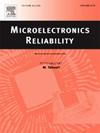基于LSTM的直流接触器剩余使用寿命预测
IF 1.9
4区 工程技术
Q3 ENGINEERING, ELECTRICAL & ELECTRONIC
引用次数: 0
摘要
直流接触器作为直流系统中至关重要的电子元件,对其剩余使用寿命(RUL)进行预测可以显著提高系统的运行可靠性。当前基于单数据点或传统机器学习的RUL预测方法面临着特征选择不方便监控、应用成本高、准确性低等问题。为此,本文提出了一种利用长短期记忆(LSTM)神经网络预测直流接触器RUL的方法。以一个具体的直流接触器为例,论证了应用该方法的可行性。该方法的优点在于只需要在直流接触器的整个生命周期内收集电流信号来预测其RUL,从而降低了应用成本。与基于传统反向传播神经网络(BPNN)的RUL预测方法相比,该方法具有更高的预测精度。此外,该方法考虑了影响直流接触器寿命的关键结构参数,为接触器设计提供了指导,并在预测模型中表现出更好的泛化能力。本文章由计算机程序翻译,如有差异,请以英文原文为准。
Remaining useful life prediction of DC contactor based on LSTM
As a crucial electronic component in DC systems, predicting the Remaining Useful Life (RUL) of DC contactors can significantly enhance the operational reliability of the systems they are part of. Current methods for RUL prediction, which are based on single data points or traditional machine learning, face issues such as the selection of features that are inconvenient to monitor, high application costs, and low accuracy. In response, this paper proposes a method for predicting the RUL of DC contactors using Long Short-Term Memory (LSTM) neural networks. A specific DC contactor is examined as a case study to demonstrate the feasibility of applying this method. The advantage of the proposed method lies in its requirement for only the collection of current signals throughout the full lifecycle of the DC contactor to predict its RUL, resulting in low application costs. Compared to RUL prediction methods based on traditional Back Propagation Neural Networks (BPNN), this method achieves higher accuracy. Moreover, by considering key structural parameters that affect the lifespan of DC contactors, the method provides guidance for contactor design and exhibits better generalization capabilities in the predictive model.
求助全文
通过发布文献求助,成功后即可免费获取论文全文。
去求助
来源期刊

Microelectronics Reliability
工程技术-工程:电子与电气
CiteScore
3.30
自引率
12.50%
发文量
342
审稿时长
68 days
期刊介绍:
Microelectronics Reliability, is dedicated to disseminating the latest research results and related information on the reliability of microelectronic devices, circuits and systems, from materials, process and manufacturing, to design, testing and operation. The coverage of the journal includes the following topics: measurement, understanding and analysis; evaluation and prediction; modelling and simulation; methodologies and mitigation. Papers which combine reliability with other important areas of microelectronics engineering, such as design, fabrication, integration, testing, and field operation will also be welcome, and practical papers reporting case studies in the field and specific application domains are particularly encouraged.
Most accepted papers will be published as Research Papers, describing significant advances and completed work. Papers reviewing important developing topics of general interest may be accepted for publication as Review Papers. Urgent communications of a more preliminary nature and short reports on completed practical work of current interest may be considered for publication as Research Notes. All contributions are subject to peer review by leading experts in the field.
 求助内容:
求助内容: 应助结果提醒方式:
应助结果提醒方式:


